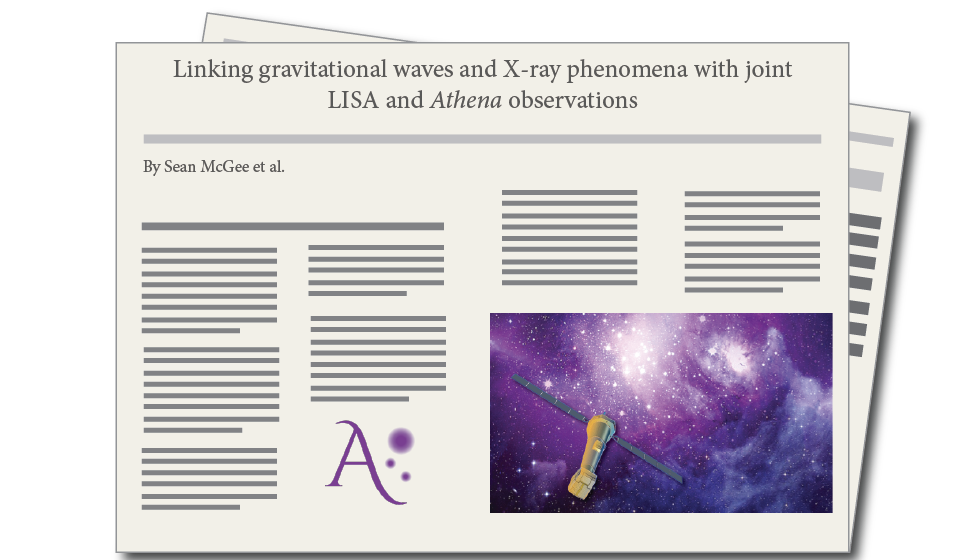
Linking gravitational waves and X-ray phenomena...

By S. McGee
The evolution of cosmic structures, the formation and growth of the first black holes and the connection to their baryonic environment are key unsolved problems in astrophysics. The X-ray Athena mission and the gravitational-wave Laser Interferometer Space Antenna (LISA) offer independent and complementary angles on these problems. We show that up to 10 black hole binaries in the mass range 105 - 108 M☉ discovered by LISA at redshift <~ 3.5 could be detected by Athena in an exposure time up to 100 ks, if prompt X-ray emission of ~ 1% - 10% of the Eddington luminosity is present. Likewise, if any LISA-detected extreme mass ratio inspirals occur in accretion disks, Athena can detect associated electromagnetic emission out to redshift ~ 1. Finally, warned by LISA, Athena can point in advance and stare at stellar-mass binary black hole mergers at redshift <~ 0.1. These science opportunities emphasise the vast discovery space of simultaneous observations from the two observatories, which would be missed if they were operated in different epochs.

